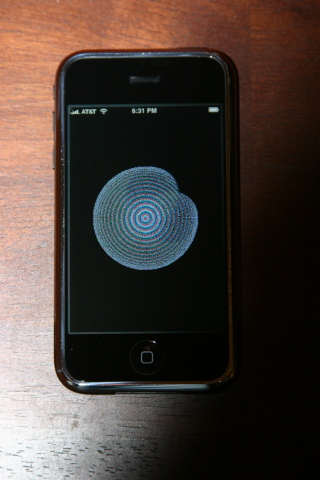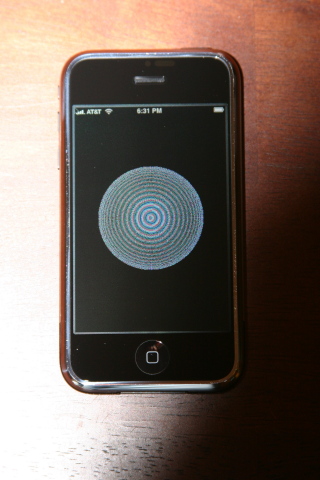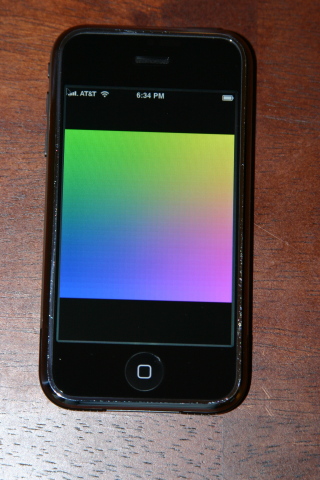(Stuff deleted that I don't have new updates on. Things like MojoSetup, etc,
will be back when there's stuff to announce. These things haven't been
forgotten, though!)
Normally I don't section off stuff in this .plan, but there's so much in this
one...so, if you want to link to a specific thing, try these links:
UT3 and Gears.
America's Army.
Google Reader.
SDL 1.3.
Amazon MP3.
Toby on the iPhone.
RSS feeds for icculus.org .plans.
Other stuff.
UT3 and Gears:
It's still being worked on. I'm not commenting about this at the moment, but
will soon.
America's Army:
The Army has taken the 2.x maintenance in-house. If you want a 2.8.2 Linux
server or any specific fixes, please ask them, not me.
Google Reader:
I ditched Sage for Google Reader for my RSS needs, and I'm loving it. I've
started flagging things I think are interesting. It's a fairly eclectic
bunch of stuff from a fairly eclectic bunch of feeds:
http://www.google.com/reader/shared/12200048204252564112
Since the shared items become an RSS feed in themselves, it's nice to start
resharing from other people's shared lists. It's useful to have other people
filter out the crap for you sometimes, if they happen to have similar
opinions of what is and is not "crap".
SDL:
Here's the rough checklist for new features in SDL 1.3 (which will
eventually become SDL 2.0). This list is subject to change, so while some
of this work is already done, none of it should be taken as a promise of
any sort. Comments, complaints, and requests are still welcome.
First, some bad news: we'll probably drop a lot of platforms/targets that
no one is maintaining (but happily add them back in if someone steps up
to support them). Also, backwards compatibility is not law in 1.3/2.0. In
many cases we have added a compatibility layer that wraps the 1.3 interfaces
in the old 1.2 functions, but if we have to break binary or source
compatibility, we will. We don't think the damage will be extensive, but
there will probably be some pieces of code in the wild that need to be
updated (or continue to use SDL 1.2). You have been warned. With that out
of the way, here's the rough list of cool, shiny, new things...
Video and events:
- Multiple windows! You don't need to have a single video surface anymore!
This is a new API (but SDL_SetVideoMode() still exists in the
compatibility layer).
- Multiple displays: SDL exposes details of what physical monitors are
hooked up to a machine and lets you control them individually.
- Formal API for positioning SDL windows: it sort of comes with the
multiple window/display support. No more setting environment variables
for this!
- Video device enumeration: you can get an idea of what APIs and hardware
are available to you.
- 2D acceleration: SDL can use OpenGL or Direct3D behind the scenes with
the 2D interfaces, so we can get acceleration on modern systems where
X11 or DirectDraw just aren't the fast paths anymore. The framebuffer-
oriented interfaces, like X11, are still there, though, for legacy
platforms and hardware.
- Texture support: the 2D interfaces now concern themselves with "textures"
and not surfaces. The assumption is that, even in 2D graphics, you now
want to try to push all the effort to the hardware when you can,
falling back to software where you can't. On the most basic level, this
just means you can't get at pixel-based framebuffers without locking
the "texture" and doing so may be much more expensive than in 1.2, but
in many common scenarios, a well-designed program can be significantly
more efficient in 1.3. There are some basic texture operations to offload
common per-pixel operations to hardware so you may not have to lock the
texture and do it yourself. This is meant to be a very simple API,
however: those needing more, even in 2D, should consider using OpenGL
directly.
- Multiple input devices: we'll be merging ManyMouse into SDL, which
will let us handle input from more than one connected mouse on at least
Linux, Mac OS X, and Windows. If all you care about is the usual generic
pointer input, that'll still work, too, but if you want to make a game
where all your friends plug in a USB mouse and compete, that'll now be
possible. This is also interesting for experimental work that has nothing
to do with games, or Photoshop-style things that want mice AND pens, etc.
- Pressure/tilt support: mouse-like input devices like tablets will be
able to report their pressure/tilt through SDL, for those that want to
write art programs. TuxPaint, I'm looking at you here.
- Horizontal mousewheel events: SDL 1.2 only responds to the oldschool
vertical mousewheel, but many mice you buy now can scroll horizontally,
too, including the Mighty Mouse that ships with Apple desktops. There's
a formal event for this in SDL 1.3.
- Mousewheel no longer looks like a button: SDL 1.2 treats wheelup as
button 4 and wheeldown as button 5. This was an accident of history,
since XFree86 mapped the wheel to these buttons back when Loki had an
interest in making this work Right Now, but it wasn't guaranteed to be
those buttons, and it never was on other platforms. These have been
moved to formal events in 1.3.
- Separation of text input and key events: Basically, we're fixing the
Unicode support. The keyboard can be treated as a 101-button gamepad
with the usual KEYUP/KEYDOWN events, but there will be separate
events for text input, so IME implementations can let users compose
characters as they'd expect to on their platform. This will replace the
"unicode" field in 1.2 key events, which was universally unreliable
once you stepped outside of America and Europe.
- Formal API to permit screensaver: no more environment variable hack!
This is useful if you're writing a windowed application and not a game.
Audio:
- Audio capture support: You can record from a microphone, etc, and recover
this data through SDL.
- Audio device enumeration: You can find and choose specific audio devices.
- Multiple audio device support: You can open multiple devices and playback
different audio from each at the same time. Take all these things and
you could, for example, have a game where the audio plays through a
set of speakers, but speech from your teammates comes to a USB headset
while you reply through a microphone...and probably other interesting
things we haven't thought of yet.
- Audio device disconnect notification: if someone accidentally kicks out
their USB audio widget, the app can be notified, so they can pause and
let the user get reconfigured, etc.
- Support for PCM data in int32 format.
- Support for PCM data in float32 format.
- Non-power-of-two resampling. If you had to do something other than
double or halve your sample rate, SDL 1.2 would break (and probably
corrupt memory). This will be fixed in SDL 1.3. This is useful for
programs that worked fine with data at 22050Hz when everyone was using
audio cards at 11025Hz, 22050Hz, or 44100Hz, but now there are a lot of
motherboard cards that only eat at 48000Hz and break badly in 1.2.
- 7.1 output support.
- Macros to parse audio format enumerations.
No more need to do things like this:
const int bitsize = MyAudioFormat & 0xFF;
Now you can do the more readable:
const int bitsize = SDL_AUDIO_BITSIZE(MyAudioFormat);
(...and others like this.)
- SDL_MixAudio() won't need an open audio device: In SDL 1.2, you could
only mix audio buffers based on the opened device format. This has been
changed to a generic interface in SDL 1.3 that allows mixing data without
dependency on a specific device, or a device at all.
- Better audio format converters: these should be faster and work better,
since we generate all the possible cases in a perl script now instead of
trying to tapdance at runtime. This means converting a buffer takes one
pass regardless of format, instead of a pass to change bitsize, another
to change the format, another to change the signedness, etc. This is
cleaner to maintain and extend, and doesn't thrash the CPU cache as much,
etc.
Joysticks:
- Connect notification: In 1.2, you needed to restart the
joystick subsystem to find new sticks. In 1.3, your friend can walk up
and plug in his controller, and your game will be able to announce "a
new challenger approaches!"
- Disconnect notification: ...and you'll also be able to deal with the
controller getting kicked out midgame, or your friend getting tired of
losing and leaving with his controller.
- Force feedback: sticks and platforms that support vibration, rumble, etc,
will be controllable via SDL.
SDL_main:
- No longer required on any platform. Now it does what it was intended
for: hiding differences in main/WinMain/etc. Initialization details
are being moved into SDL_Init() where they belong. This makes it easier
to have SDL as a plugin, or use a non-SDL path without it hijacking your
mainline just to function. This is really useful for scripting languages,
since, say, a Python program might want to use SDL without linking SDL
directly to python.exe and replacing its main() function.
Misc:
- Atomic operations API: a way to deal with atomic operations like
test-and-set and compare-and-swap will be added. This is becoming
increasingly important in game development, and every processor and
platform handles this differently, so it'll be nice to abstract the
details into SDL.
- SDL_KillThread() is gone. It was never safe or portable. The function
will continue to exist for binary compatibility, but it will always
be a no-op that reports failure. If you need this, your program has
problems anyhow and needs minor reworking to cleanly handle thread
termination, even if KillThread was still available.
Planned but not yet fully considered:
- Some minor cleanups and clarifications to the RWOPS api are planned
to fill some gaps, but this is still work in progress.
- A basic API to read/write from the system clipboard would be nice.
- A basic API to support drag'n'drop with the system would be nice.
- Probably other stuff! Let Ryan know what you want!
Amazon MP3:
Amazon's MP3 store is actually pretty good when held up against the iTunes
Music Store. You can use it in a web browser with the familiar Amazon
interface, which is actually pretty comforting. If you are just buying
single songs, it can just download like any other file, but since they
won't let you redownload purchases (argh to both Amazon and iTunes!), and
can't let you do this for album purchases, you really have to use their
Mac/Windows downloader for your own safety if nothing else. Now, granted, I
usually just lose interest at this point, and would have with Apple too if
it didn't magically appear in an update to an application I was already
using...but I gave it a try.
The downloader is a minimal application that just gives you a progress bar
and adds songs to your iTunes library automatically (but not the "Purchased"
playlist, unfortunately, but you can do that manually). It appears Amazon
didn't want to put any features into this downloader app, but rather just
make the process more idiot^H^H^H^H^Hfail proof, which was probably a good
call. It simply serves as glue to make this more or less equal to the iTunes
Music Store experience. While it's obviously not as tightly integrated, the
overall experience basically feels like iTMS and bridges the differences
acceptably, so users shouldn't feel too scared to try it. They even give you
a free song to demonstrate what using the downloader app will be like. In the
end, when you're looking at your iTunes library and syncing your iPod, any
differences between the stores matter not one bit.
Using the downloader app is probably roughly the same experience if using
Windows, either iTunes or Windows Media Player.
It's interesting that the store's front page pictures an iPod playing a
Radiohead album, since that band is still conspicuously absent from iTMS,
but very available from Amazon. It's also nice that you can choose to buy
the retail disc instead of the MP3s, for the one time in your life that you'd
rather do that.
The fact that Amazon is doing 256k MP3s is really smart. I don't know how
they pulled that off with the record labels. Not dealing with DRM basically
opened them up to anything that plays music, including no-hassle iTunes/iPod
integration. Making that deal is all the difference in the world. No
screwing around with finding devices that can play Windows Media, or AAC, or
some encrypted crap, just download and go. Want to burn a disc? No problem!
Want to play it on that ancient music player no one's heard of? No problem!
Not having to make a Faustian bargain with a merchant to use the content I
purchased is fantastic. I like this about iTunes Plus, too, but that hasn't
seen any momentum after the initial announcement, not to mention that
it costs significantly more. I really don't know how Amazon pulled this off.
Either this is costing them dearly, or the labels just really want to stick
it to Steve JObs. Maybe both.
Amazon really does seem best positioned to compete here, due to all their
existing market infrastructure and customer base. It's astonishing no one
did this before. It's nice to have options, but I could see myself going to
Amazon much more than iTMS, starting right now. Could be interesting.
Also, I still don't understand why Valve will let me redownload 50 gigabytes
worth of games when I switch machines, no questions asked, but I can't
recover an 89 cent, 5 megabyte song from either Apple or Amazon if my hard
disk crashes. I predict that there will be a news story some day about
someone that diligently backs up his thousands of dollars of music purchases,
and still loses it when his house burns down; the headline will be
"Apple ignores homeless man's pleas" when they refuse to let him recover
his music collection. The negative publicity will make them change their
policy.
Toby on the iPhone:
Since moving, every time I take a call, inevitably I'm told "I can't
hear you, you're really quiet!" Apparently it's my phone plus Sprint's
network in Charlotte, since I'm the only one having a problem, and my phone
is fine in other parts of the country.
Then one night my friend called to tell me his wife might have had a stroke
and Sprint told me "all circuits were busy!" and that was the last straw.
The next day, I bought an iPhone and switched to AT&T.
I can't help but void my warranty on any gadget, so I had to unjail it:

Just for a goof, I tried targetting Toby at the iPhone. The toolchain took a
little while to build, and someone already had an SDL port for the iPhone.
With those two components, Toby compiled and ran without any source changes,
which is pretty cool:



...ran fairly fast, too. When they get homebrew up on the 1.1.1 firmware and
crunch time is done, I'll probably build a real UIKit interface for the
thing and polish it up really nicely.
RSS feeds for icculus.org .plans:
You can get an RSS feed for an individual i.o user's .plan file now:
http://icculus.org/cgi-bin/finger/finger.pl?user=icculus&rss=1
...this is probably a last gasp for people that haven't moved to a real
blog yet, like me. IcculusFinger 3.0 will probably just be a port-79
interface to Blogger. :)
Other stuff:
"That's like trying to Google 'Chuck Norris getting his ass kicked.' You'll
get zero results, because it just doesn't happen."
--Wil Schroter.
--ryan.